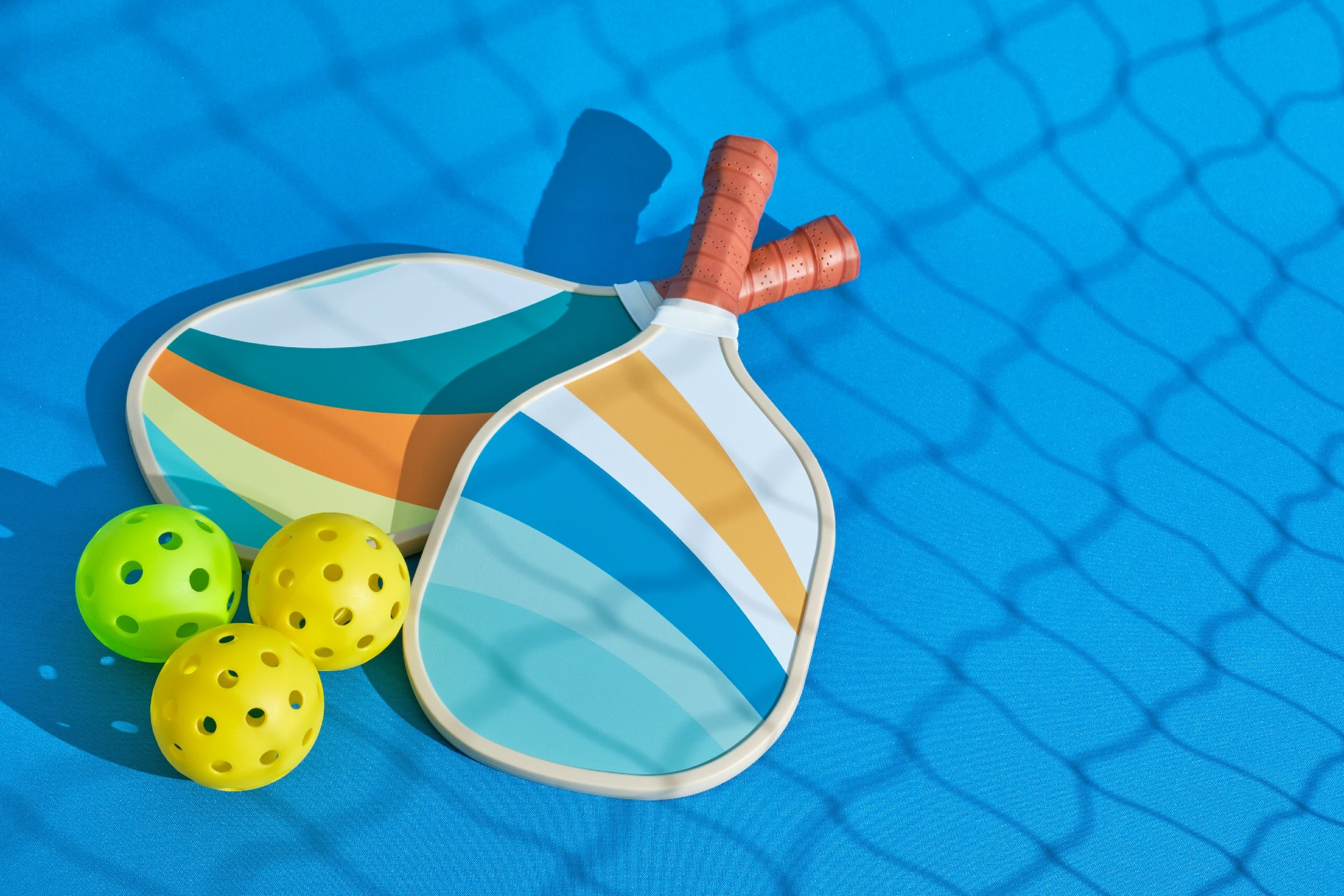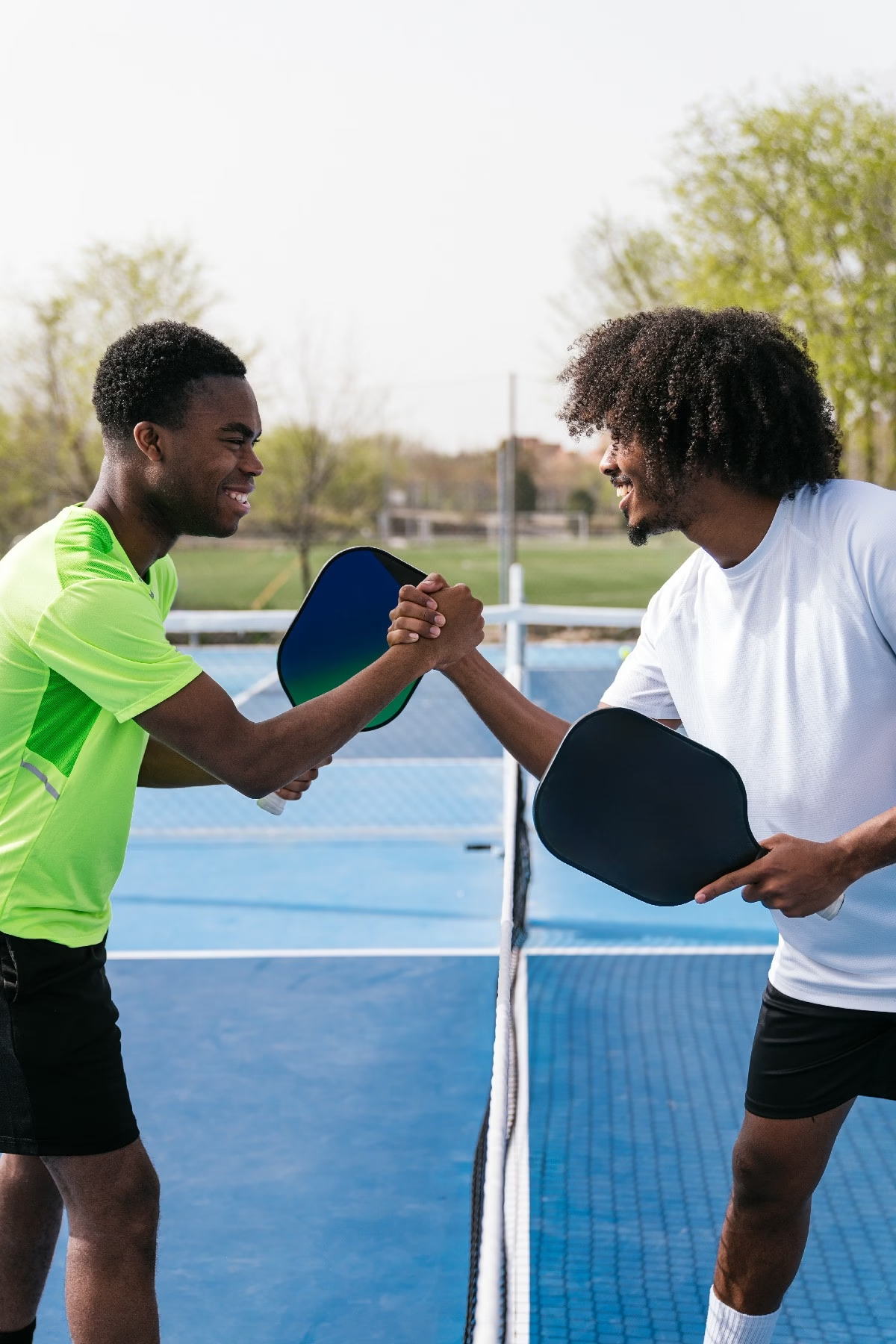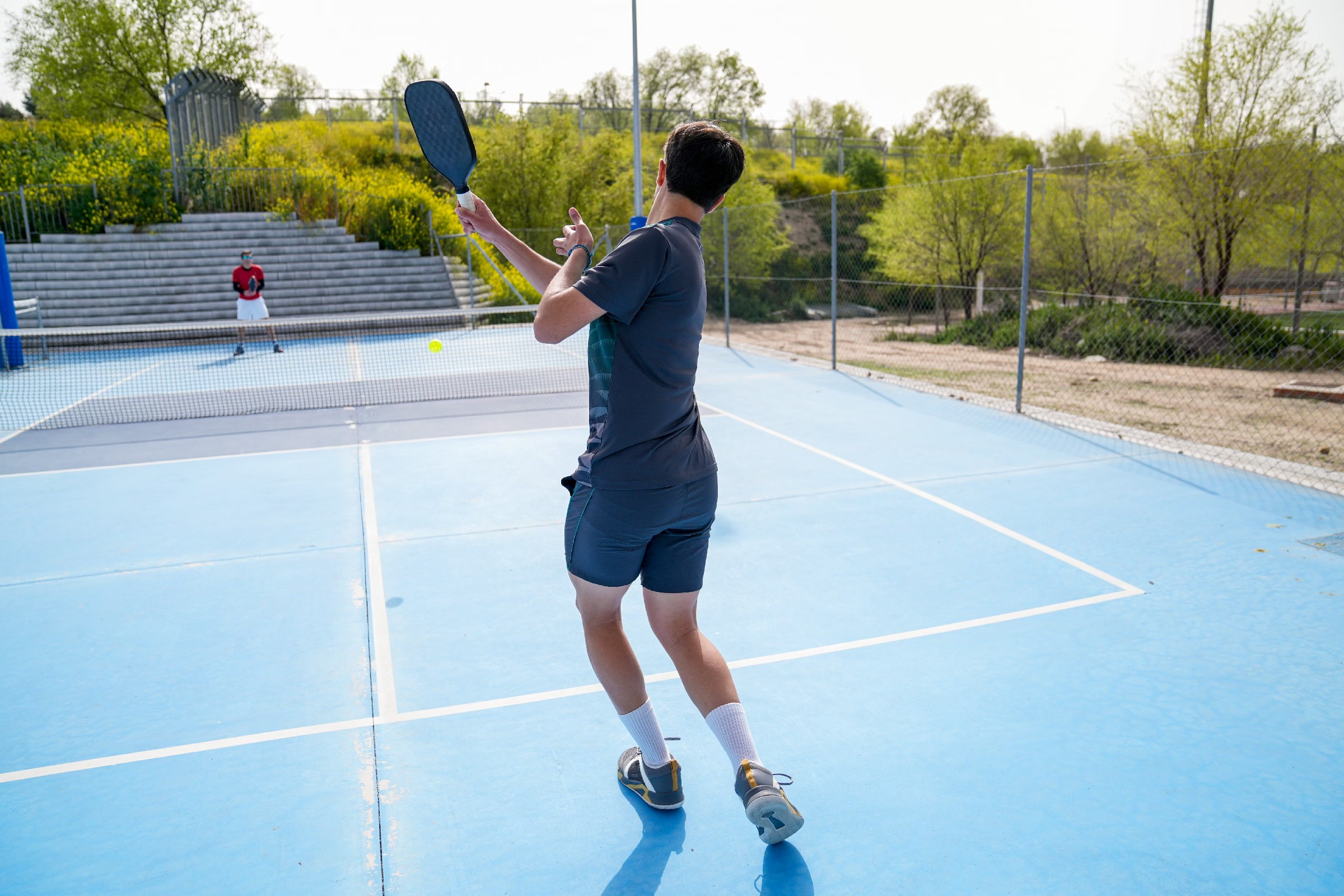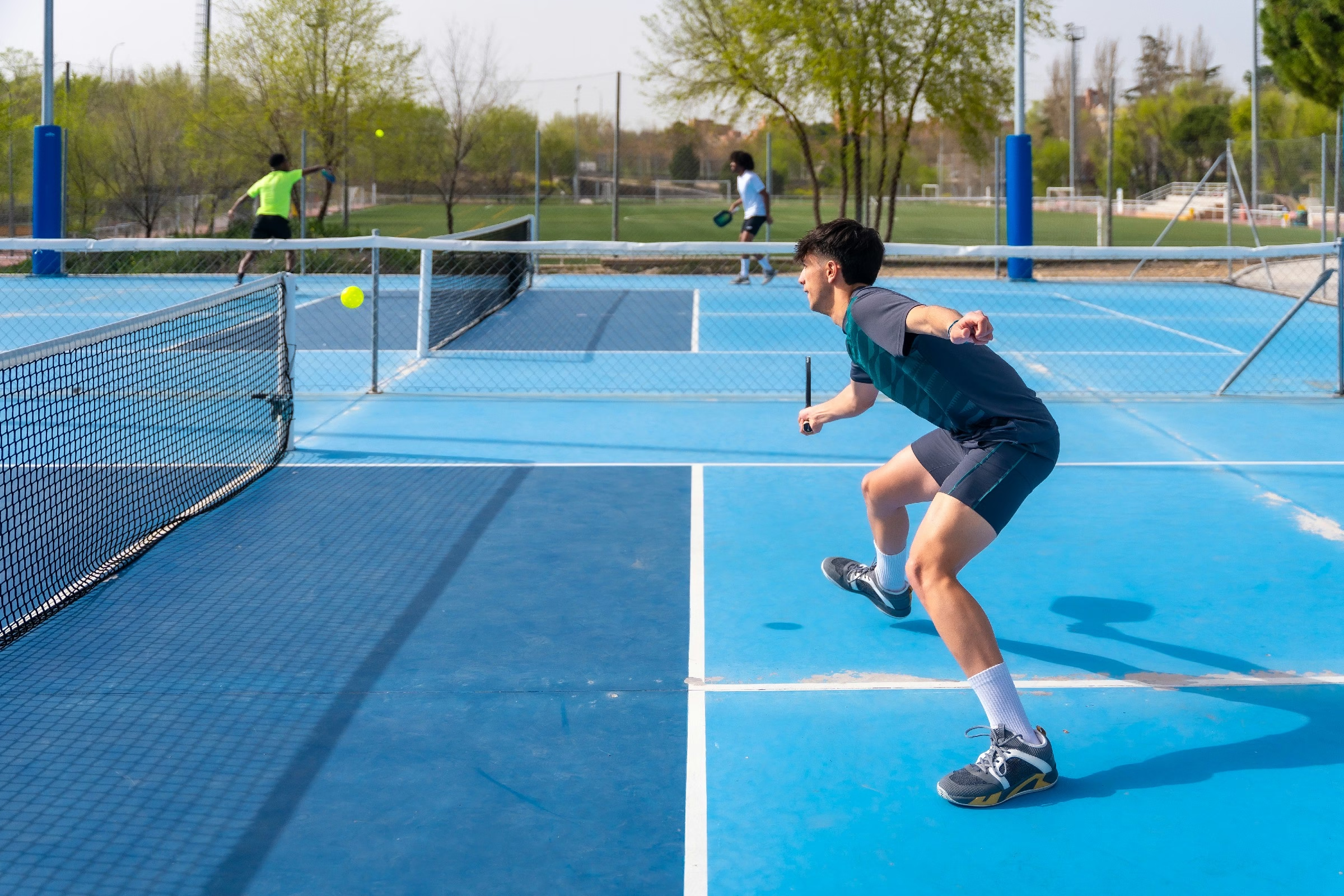Blog
how to retape a pickleball paddle
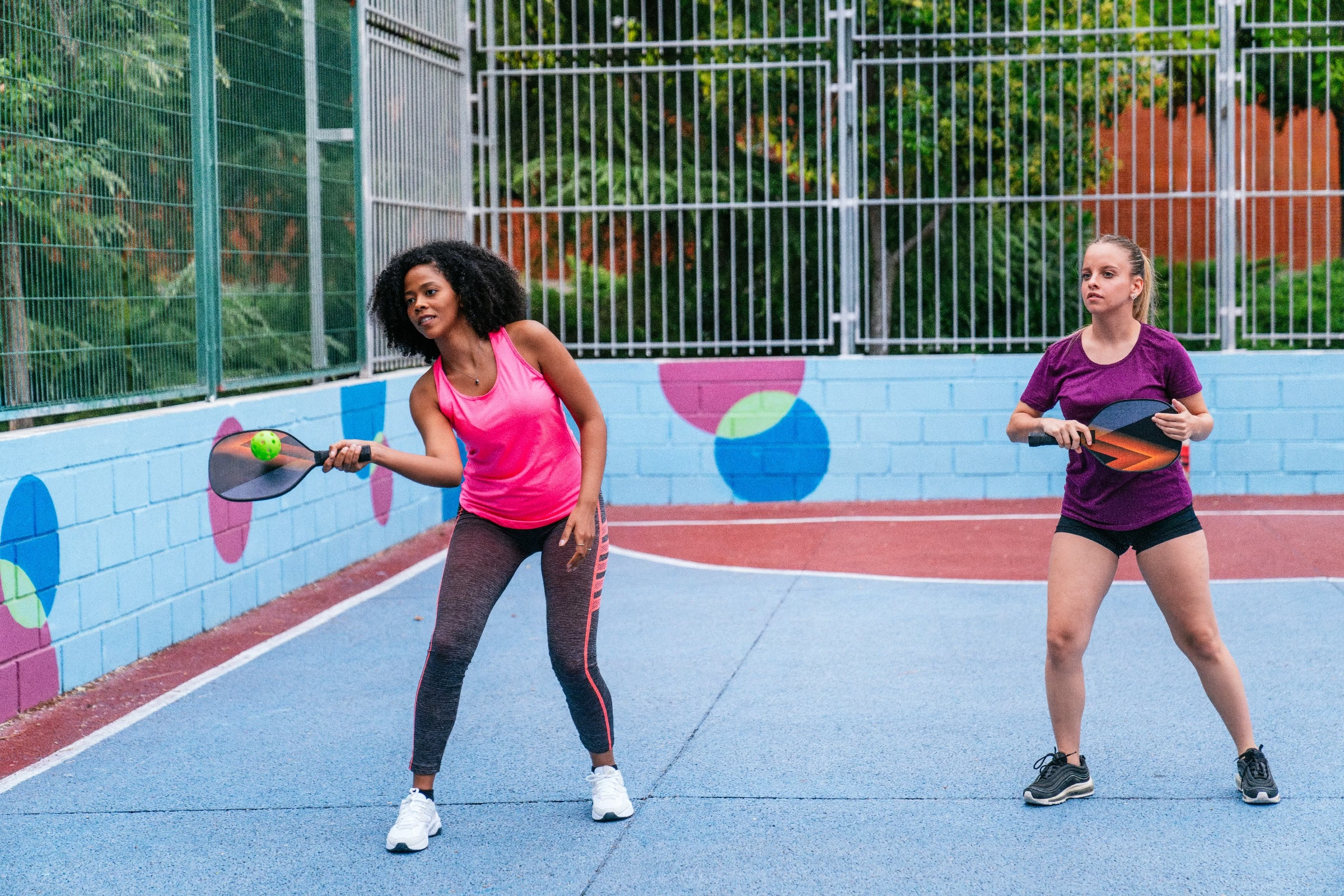
Reviving Your Game: A Guide to Retaping Your Pickleball Paddle
in the vibrant world of pickleball, every stroke counts, and the right feel in your hand can make all the difference. Just as athletes fine-tune thier skills, so too should thay maintain their equipment. Our trusty pickleball paddles, frequently enough subjected to vigorous rallies and spirited matches, may lose their grip over time. A well-taped handle not only enhances your control and comfort but also prolongs the life of your paddle. If you’ve noticed that your grip has become worn out or damaged, fear not! This guide will take you through the steps to expertly retape your paddle, ensuring that with each swing, you’re ready to bring your best game to the court. let’s dive in and restore that connection between you and your paddle,one layer of tape at a time.
Table of Contents
- Understanding the Importance of Retaping Your Pickleball Paddle
- Choosing the Right Grip Tape for Optimal Performance
- Step-by-Step guide to Removing Old Grip Tape
- Techniques for Applying New Grip Tape Evenly and Securely
- Common Mistakes to Avoid When Retaping Your Paddle
- Maintaining Your Paddle Grip for Longevity and Comfort
- Q&A
- Closing Remarks
Understanding the Importance of Retaping Your Pickleball Paddle
Re-taping your pickleball paddle is essential for maintaining both performance and comfort during play. Over time, the grip material can wear down, leading to reduced traction and control. When players frequently grip their paddles, the original tape can become slick or lose its texture, making it harder to execute shots effectively. By replacing the tape, you not only revitalize your paddle’s handling characteristics but also enhance your confidence on the court.
Another notable reason for regular re-taping is the health and safety of your hands. Old or damaged tape can cause blisters or discomfort, detracting from your overall enjoyment of the game. Fresh tape helps absorb sweat, ensuring your grip remains secure even during intense matches. Additionally, it can provide cushioning that minimizes the impact on your fingers and palms, reducing the risk of injury:
- Improved grip control
- Reduced risk of blisters
- Enhanced comfort during extended play
retaping offers a chance to personalize your paddle, giving it a fresh look and feel. With various colors and patterns available, you can express your style while enhancing functionality. Retaping is not just a maintenance task; it’s an opportunity to refresh your gear and reinvigorate your playing experience. Here’s a swift comparison of different types of grip tape:
| Grip Type | Texture | Best For |
|---|---|---|
| standard Grip | Medium | General play |
| Textured Grip | Rough | High-intensity games |
| Overgrip | soft | Comfort and sweat absorption |
Choosing the Right Grip Tape for Optimal Performance
When it comes to enhancing your game on the pickleball court, the choice of grip tape plays a crucial role in maintaining comfort and control.Various materials are available, each catering to different preferences and playing styles.For instance, many players prefer polyurethane grip tape for its excellent shock absorption and durability, making it a popular choice for extended play. Others may choose rubberized options that provide a firmer grip to maintain performance during intense matches.
Another significant consideration is the thickness of the grip tape. Thicker tapes can add a bit of cushion, ideal for players who need extra padding, while thinner tapes might suit those who prefer a more direct connection to the paddle.Some players also opt for textured grip tapes, which can enhance traction and minimize slipping, helping you execute precise shots with confidence. To select the right type, consider factors such as your comfort level, sweat tendencies, and even the climate in which you usually play.
To assist in your decision-making, here’s a quick overview of popular grip tape types:
| Grip Tape Type | Benefits | Best For |
|---|---|---|
| Polyurethane | Shock absorption, durable | Players needing comfort |
| rubberized | Firm grip, reduced slippage | Aggressive players |
| Textured | Enhanced traction | Players with sweaty hands |
Step-by-Step Guide to Removing Old Grip Tape
Getting rid of old grip tape might seem daunting, but with the right approach, you can make it a breeze. Begin by gathering your supplies: utility knife, adhesive remover, scraper tool, clean cloth, and new grip tape for retaping. start by carefully slicing along the edges of the existing grip tape using the utility knife. This will help loosen the adhesive and make it easier to peel off. Ensure that you do this cautiously to avoid damaging the paddle’s handle.
Once the initial cut is made, gently pull the grip tape from the handle. If you encounter resistance, don’t force it; instead, apply a few drops of adhesive remover along the edge to loosen the adhesive. Let it sit for a minute, and then continue peeling. Any leftover sticky residue can be tackled with the scraper tool—just make sure to work carefully to preserve the integrity of your paddle’s surface. wipe the handle clean with a cloth to remove any remaining adhesive or debris.
After ensuring the handle is clean and dry, you’re ready to apply new grip tape. Here’s a simple reference table for selecting the right size grip tape:
| Grip Type | Recommended Tape Size |
|---|---|
| standard Handle | 1 inch wide |
| Thicker Handle | 1.5 inches wide |
| Custom Design | Craft as needed |
Choose a tape that matches your grip size, and then align it at the base of the handle, wrapping it upward while maintaining tension for a snug fit.With the tape securely in place, use your hands to smooth out any air bubbles and ensure it adheres evenly. With these steps, your pickleball paddle will be ready for action, sporting a fresh, comfortable grip!
Techniques for Applying New Grip Tape Evenly and Securely
When retaping your pickleball paddle, achieving an even and secure application of the grip tape is essential for optimal performance. Start by ensuring that the surface of the paddle handle is clean and dry. This creates a proper foundation for the tape to adhere effectively. Gather all necessary materials, including the new grip tape, scissors, and a heat gun or hairdryer, if needed. Preparing the workspace will also help you maintain focus and avoid distractions during the taping process.
As you begin to apply the tape,ensure you’re wrapping it tightly around the handle. Start at the base and spiral upwards while maintaining a consistent overlap of around 1/8 inch. This ensures that the tape lays flat without any gaps or bubbles. If you’re using a heat gun or hairdryer, apply gentle heat to the tape as you wrap to increase its flexibility. Remember the following key points:
- Maintain tension: This will keep the tape from loosening over time.
- Keep it straight: Twist the tape slightly with each layer to avoid overlapping incorrectly.
- Check alignment: Frequently glance over your progress to ensure the tape remains even.
For a polished finish, cut the tape at an angle and secure the end down firmly. This will not only prevent lifting but also give your grip a streamlined look. After applying the tape, take a moment to gently press down on the entire grip to ensure everything adheres well.If you notice any air bubbles after completion, use the edge of a credit card to smooth them out, pushing towards the edge to release the trapped air. By following these simple techniques, you’ll achieve a snug grip that enhances your pickleball game.
Common Mistakes to Avoid When Retaping Your Paddle
When retaping your pickleball paddle, one of the moast common errors is not cleaning the surface beforehand. Failing to remove old adhesive and residue can lead to a weak bond between the new grip tape and your paddle. Before you start, make sure to thoroughly clean the handle with rubbing alcohol or a suitable cleaner and a cloth. This step not only ensures that the tape adheres better but also prolongs its lifespan.
Another frequent mistake is using the wrong type of tape. Many players opt for regular athletic tape or any random grip tape they find, not considering the specific requirements for pickleball paddles. it’s crucial to choose grip tape designed for sports equipment to ensure optimal durability and comfort. Look for options specifically labeled for pickleball or tennis to achieve a secure,cushioned grip that enhances performance on the court.
applying the tape incorrectly can be a major faux pas. Ensure you wrap the tape evenly around the handle, without overlapping too much or leaving gaps.An uneven application can cause discomfort and impact your grip.For a smoother finish, consider using a guide or watching tutorials that demonstrate the correct wrapping technique. Additionally, if you’re using tape that stretches, remember to maintain an even tension as you wrap to avoid any distortions.
Maintaining Your Paddle Grip for Longevity and Comfort
To ensure your pickleball paddle remains a reliable extension of your game, paying attention to your grip is essential. Over time, the grip tape may wear out due to constant handling, exposure to moisture, and the natural oils from your skin. To enhance the longevity and comfort of your paddle grip, consider the following tips:
- Regular Inspection: check your grip tape routinely for signs of wear or damage, such as fraying or loss of tackiness.
- Keep It Clean: Wipe down the grip after each use to remove sweat and dirt, which can degrade the adhesive properties of the tape.
- Store Properly: Avoid leaving your paddle in hot or humid conditions that can affect the elasticity and durability of the grip.
When it comes to re-taping your paddle,a consistent technique is key. Ensure that you choose the right tape—whether it’s cushioning or more textured grip material. This choice directly impacts both comfort and control during play. Here’s a quick guide to help you decide:
| Grip Type | Best For | Characteristics |
|---|---|---|
| Soft Cushion Grip | Players seeking comfort | Provides cushioning and reduces vibration. |
| Tacky Grip | Players wanting strong traction | Offers excellent grip for aggressive play. |
| Textured Grip | Players focusing on control | Enhanced texture increases feedback and handling. |
After selecting your grip tape, follow proper wrapping techniques to maintain its longevity. Start at the butt end of the handle, overlapping each layer by about half for an even application. Finish the taping with a secure attachment at the top, ensuring that the edge is smoothly aligned to prevent snags during gameplay. Remember, a well-maintained grip not only enhances comfort but also boosts your performance on the court.
Q&A
Q&A: How to Retape a Pickleball Paddle
Q: why do I need to retape my pickleball paddle?
A: Over time, the grip tape on your paddle can wear down, losing its tackiness and comfort, which can affect your game. Retaping not only refreshes the grip but also ensures you have a secure hold during intense rallies.
Q: What materials do I need to retape my pickleball paddle?
A: To retape your paddle, you’ll need new grip tape (available in various widths and textures), a pair of scissors, and optionally, some double-sided tape for extra security. Having a clean cloth handy can also help keep the paddle free from dust during the process.
Q: How do I start the retaping process?
A: Begin by removing the old grip tape. Carefully peel it away, starting from the top or bottom. If it’s especially stubborn, you can use a small knife to lift the edge. Once removed, check the handle for any residue and clean it if necessary.
Q: What is the best way to apply the new grip tape?
A: Start at the base of the grip (the end of the handle) and apply the tape while holding it at an angle. Wrap it around the handle, overlapping slightly with each turn to ensure full coverage. Be sure to keep the tape taut but not overly stretched to maintain its cushioning effect.
Q: How do I finish off the taping properly?
A: Once you reach the top of the handle, cut the tape at a diagonal angle to avoid sharp edges. Tuck the end of the tape under the previously laid tape for a neat finish.If you’re using double-sided tape, secure the base with it before moving on to the grip tape to prevent slippage.
Q: Can I customize my grip when retaping my paddle?
A: Absolutely! Grip tape comes in various textures and thicknesses. You can choose a thicker tape for more cushioning or a textured one for better control. Some players even add an additional layer of thin overgrip tape for personalized comfort.
Q: How frequently enough should I retape my pickleball paddle?
A: It depends on your frequency of play and the conditions in which you play.Generally, if you notice a loss of grip or comfort, it’s time to retape. Many players choose to retape every season or after a few months of regular play.
Q: Any final tips for retaping my paddle?
A: Take your time! A well-done tape application ensures a better grip and more enjoyable gameplay. Additionally, experiment with different types of grip tape to find the one that suits your style—it’s a small change that can make a big difference in your performance. Happy playing!
Closing Remarks
retaping your pickleball paddle is not just a maintenance task; it’s a chance to personalize your gear and enhance your playing experience. With the right materials and techniques, you can ensure that your paddle feels comfortable and secure in your hands, allowing you to swing confidently on the court. Whether you prefer a classic grip or something more vibrant, taking the time to retape your paddle can considerably impact your overall performance.So the next time you notice your grip wearing thin, don’t hesitate to grab that tape and get to work. Embrace the ritual of renewal, and step back onto the court with a refreshed paddle that reflects your style and dedication to the game. Happy playing!




